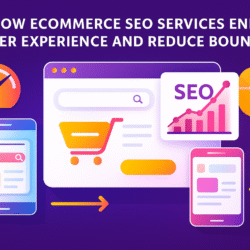The world of artificial intelligence has shifted from a distant promise to a tangible force transforming many aspects of daily work and life. In 2025, generative AI, the ability of machines to create text, images, code, and more, has matured into a cornerstone technology that powers breakthroughs across industries. This isn’t just tech for tech’s sake; it’s about transforming how businesses innovate, healthcare delivers care, and society navigates complex challenges with smarter tools.
Why Generative AI Matters Today: From Novelty to Necessity
Only a few years ago, generative AI was mostly a curiosity. Chatbots, image creators, and novelty demos captured imaginations but rarely moved beyond the lab or marketing pitches. Today, that story has fundamentally changed. Leading enterprises and institutions deploy generative AI to solve real problems reliably on a scale. This shift signals the maturation of AI as a general-purpose technology, one that spreads through many sectors driving innovation, productivity, and new business models.
The excitement is justified. Models like OpenAI’s GPT-4-o3 and Google’s AlphaProof showcase remarkable strides in problem-solving abilities, capable of handling scientific, mathematical, and programming challenges that used to require expert humans. Their use in agentic AI systems, ones that autonomously plan and execute tasks, is just beginning to reshape workflows and software design. It’s easy to see why companies now view generative AI not as a gadget, but as an essential technology to compete and innovate in a complex world.
The AI Innovation Engine: What’s New in 2025
Several exciting developments are driving this transformation. First, smarter large language models (LLMs) are reducing inaccuracies known as “hallucinations” by grounding their outputs in real-time data retrieval, a technique called retrieval-augmented generation (RAG). This evolution not only boosts AI reliability but opens doors for highly specialized applications.
Second, the rise of agentic AI marks the future frontier. These AI agents operate with minimal human input, autonomously navigating multiple tools and datasets to execute complex workflows. Gartner predicts that by 2028, agentic AI will influence 15% of daily work decisions, up from practically zero just a few years ago.
Finally, self-training models, those capable of improving themselves using vast unlabelled data, are gaining traction, helping reduce dependency on expensive human annotations while enhancing performance on niche tasks. Together, these trends create a powerful AI innovation engine that extends beyond generating content into augmenting human intelligence in profound ways.
Real-World Impact: Generative AI Transforming Industries
Healthcare Innovations Enabled by Generative AI
Healthcare is a standout beneficiary. Consider Mass General Brigham’s AI-powered nurse hotline, which processed over 40,000 patient calls in a single week, significantly easing pressure on medical staff. Similarly, Kaiser Permanente uses generative AI to transcribe and summarize patient consultations, allowing doctors to focus more on care and less on paperwork.
In drug development, companies like Sanofi have partnered with AI pioneers to accelerate the discovery process by analyzing complex biological data patterns, speeding up timelines that used to take years. Automated billing and claims processing, exemplified by Oscar Health, leverage AI to streamline administrative tasks, detect fraud, and optimize operational efficiency.
It’s not just about automation; these technologies improve patient outcomes and bring cost efficiencies that ripple across healthcare systems. This impact showcases how generative AI bridges cutting-edge innovation with tangible human benefits.
Business and Workflow Revolution
Across business sectors, generative AI is revolutionizing workflows. Whether drafting emails, summarizing reports, or generating code snippets, AI empowers knowledge workers to be more productive and creative. Enterprises integrating generative AI report faster decision-making, reduced costs, and new opportunities for product innovation.
For example, TCS recently announced a strategic partnership with Google Cloud to build industry-specific AI solutions that harness deep domain knowledge and generative AI’s power to fuel digital transformation. Meanwhile, companies are deploying AI agents that autonomously handle complex operational tasks, from risk management to customer engagement, freeing humans to focus on strategy and innovation.
These successes demonstrate the transformational potential of AI-driven automation, not to replace humans, but to amplify human ingenuity.
Addressing the Challenges: Trust, Ethics, and Misuse
Despite its promise, generative AI’s rise raises important ethical and operational questions. Hallucinations, AI confidently generating incorrect or misleading information, remain a core challenge. Solutions lie in RAG systems and improved model training, but vigilance is essential.
Privacy concerns, bias in AI outputs, and transparency about AI decision-making also demand careful governance. Regulators worldwide, such as the EU with its AI Act effective August 2025 and India’s evolving AI guidelines, are crafting frameworks to balance innovation with safety and fairness.
Industry-led self-regulation initiatives indicate a responsible approach to AI development, but continual dialogue among technologists, policymakers, and society at large will be crucial to build and maintain trust.
The Future Outlook: What Comes Next in the Generative AI Journey
Looking ahead, generative AI’s evolution will deepen in multi-modal capabilities, combining text, visuals, audio, and video, and expand into new domains like entertainment, where AI helps create richer storytelling and immersive experiences.
Integration into daily digital ecosystems will become seamless, supporting humans as creative partners and decision facilitators. Professionals and businesses should focus on responsible adoption: investing in AI literacy, ethical frameworks, and collaborative workflows to harness AI’s full benefits safely.
Ultimately, the promise of generative AI is to augment human creativity and problem-solving, unlocking opportunities once thought impossible. As this young technology matures, it invites us all to imagine new futures, and the roles we will play in shaping them.
Author Name: Satyajit Shinde
Satyajit Shinde is a research writer and consultant at Roots Analysis, a business consulting and market intelligence firm that delivers in-depth insights across high-growth sectors. With a lifelong passion for reading and writing, Satyajit blends creativity with research-driven content to craft thoughtful, engaging narratives on emerging technologies and market trends. His work offers accessible, human-centered perspectives that help professionals understand the impact of innovation in fields like healthcare, technology, and business.


